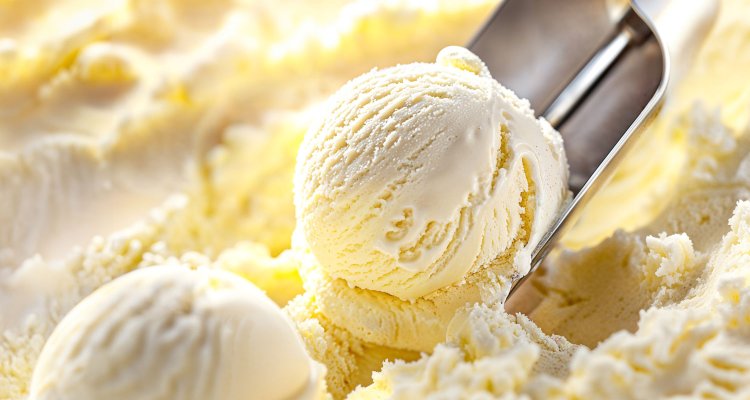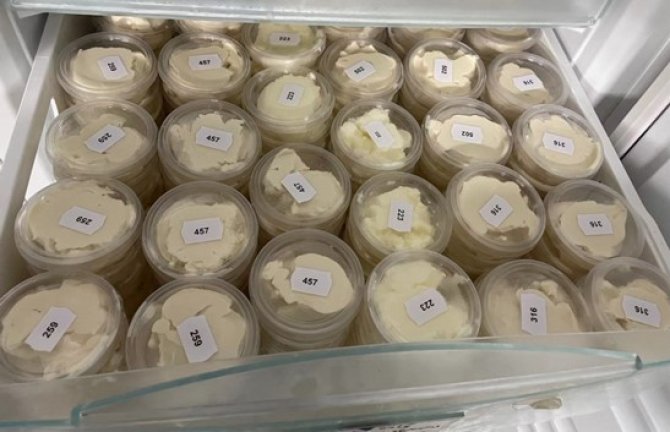
News
Low-sugar ice cream, but without a grainy texture
Wageningen researcher Qi Wang has developed a new variant of low-sugar ice cream that mimics the texture and melting properties of traditional ice cream. By replacing half of the sugar with broken-down proteins or the sweetener xylitol, she succeeded in creating a smooth ice cream without the graininess often associated with low-sugar versions. However, the flavour still needs refinement.
By reducing sugar in the ice cream, the cold treat becomes less unhealthy. Such low-sugar ice cream has been around for a while, but it does not appeal to everyone. It often has a grainy texture and melts either faster or slower than regular ice cream. "Our tongue is very sensitive and detects even the slightest differences," says PhD candidate Wang. To tackle this issue, she developed a low-sugar ice cream that closely resembles the texture and melting behaviour of regular ice cream. Wang successfully defended her thesis today with the Physics and Physical Chemistry of Foods group.
Antifreeze agent
Although a scoop of ice cream may look simple, at a microscopic level it is actually a complex food, consisting of fat droplets, ice crystals, air bubbles, and unfrozen syrup water. Sugar plays a key role in maintaining this structure, particularly the ice crystals. "Sugar acts as an antifreeze agent," explains Wang. Like salt on icy roads, sugar helps to prevent ice crystal formation, which improves the mouthfeel: the best ice creams contain small ice crystals. The larger they are, the grittier and less creamy the ice cream becomes.
Wang set out to find other substances that could function like sugar in this regard. "We selected molecules that we expected, based on their structure, to be able to do something similar," explains her supervisor, Elke Scholten. This led them to the sweetener xylitol, the amino acid lysine, and a blend of peptides and amino acids. In a professional ice cream maker, Wang mixed the ingredients for ice cream and replaced half of the sugar with one of these substances, along with a larger molecule to maintain viscosity, such as larger peptides or maltodextrin. The result: three new variants of low-sugar ice cream, flavoured with vanilla and sweetener.
Salty taste
In the lab, Wang used special equipment to measure the properties of the new ice cream. "We melted it on a fine mesh," she explains. "By recording the droplets that fall through, we can calculate how quickly the ice cream melts." She also used a device that punctures the ice cream to assess its hardness. The results were comparable to regular ice cream. But, of course, taste is a crucial factor too. Thus Wang prepared the ice cream in a special food-safe laboratory and invited ninety participants to evaluate it.

The participants agreed that the low-sugar ice cream had the same soft, creamy texture and melted in a similar fashion as regular ice cream. However, the low-sugar variants received a lower overall rating. On a scale of zero to nine, the variant made with broken-down proteins, as well as the one with lysine, scored around 4.5, compared to 7.5 for the regular ice cream. This was largely due to an aftertaste caused by the proteins, which gave the ice cream a slightly salty or bitter taste, according to Wang. The variant with xylitol performed slightly better, with a score of 6.5, though the test panel also detected some aftertaste here. Nevertheless, Wang believes this aftertaste need not be an issue per se. "The ice cream we have made is very plain, with no special flavours or toppings. If we optimise it with flavours like caramel or coffee, they could potentially mask the taste of the proteins."
Wang's commitment to her low-sugar ice cream is clear from her future plans. While she aims to gain more experience working in the food industry in the Netherlands, she has not given up on her ice cream dream. "In ten years' time, I hope to open my own ice cream parlour, selling low-sugar ice cream," says the newly minted doctor.